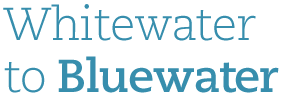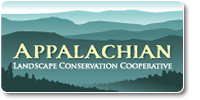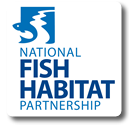GTMNERR Community Oyster Shell Recycling and Living Reef Construction Project
| Project Start Date | |
|---|---|
| Project Leader | |
| Organization |
This project established an oyster shell recycling program for St. Johns County, Florida, constructed a living shoreline, and planted spartina grass within the boundaries of the new reef to further protect the shoreline and provide nursery habitat for marine species at the Guana Tolomato Matanzas National Estuarine Research Reserve.
Background
The Guana Tolomato Matanzas National Estuarine Research Reserve (GTM NERR) on Florida's First Coast located in St. Johns and Flagler counties, is part of a network of 28 protected coastal areas along the United States coast from Alaska to Puerto Rico, known as the National Estuarine Research Reserve System. The GTM NERR, which receives an average of 300,000 visitors annually, is managed by the Florida Department of Environmental Protection (DEP) in partnership with the National Oceanic and Atmospheric Administration (NOAA) for estuarine and upland environments, including coastal strand and maritime forest habitats (73,000 acres).
From the initiation of the recycling program (March 2012) through December 2013, the restaurants contributed ~110,582 pounds of reclaimed oyster shell. Additionally, ~19,551 pounds of reclaimed oyster shell from private donations and community oyster roast events were collected. The total amount of reclaimed oyster shell during that time frame was ~130,133 pounds!
As the program progressed and awareness of the program increased, a number of local restaurants have called interested in joining the program! However, at the present time, funding and recycling equipment limits the number of restaurants that can be a part of the program at one time.
The GTM NERR is hopeful that the program may be able to grow by partnering with other
institutions (such as St. Johns County) and sharing resources or as other funds become available.
Completed
Oyster Shell Recycling Program Initiation Process
In order to initiate the program, Four to six restaurants with the highest volume of oysters sold were be selected to participate in the start-up of the recycling program. To select the restaurants, the project coordinator conducted phone interviews and site visits to make a decision based on criteria such as the volume of oysters served at the restaurants. Once selected, restaurant management and staff was trained on the benefits of the program, and they established procedures for recycling oyster shell, such as how to dispose of them properly in the restaurant so that they could be picked up by the project participants.
In addition to preparing staff to recycle the oysters, it was important to increase restaurant and public awareness of the value of recycling oyster shell by producing and distributing materials and media coverage. Through the project, a brochure, a restaurant table-topper, an oyster restoration component of the GTM NERR website, a short YouTube video (available on project website) were created. Also, project participants conducted and participated in many outreach activities.
Reef Restoration Methods and Results
In order to build the oyster reef, oysters were collected from the restaurants, prepared and staged. Multiple piles of shell that has been collected from area restaurants is piled and processed. Each pile has a small sign above it noting the date the shell was placed (the top date) and the date the shell will be ready for harvesting and reuse. In Florida the oysters are required to bake in the sun for 90 days and are raked during that time to remove bacteria and pathogens and to prevent any potential cross-contamination, as many oysters sold in area restaurants are not actually local, but brought in from other states. Students from the St. John’s Technical High School and many others have helped with the oyster raking and bagging.
Volunteers also planted Spartina along the shoreline.
In order to measure the effectiveness of living shorelines to prevent continuing shoreline erosion in the restoration area, shoreline markers were placed at the reef to measure the baseline measurements of the marsh before and after planting. Measurements were taken by measuring the distance between the parallel upland and marsh edge shoreline markers. These measurements will continue to be monitored by GTM NERR staff to record any growth or continued regression of the saltmarsh.
In addition to the physical shoreline monitoring, five Picture Posts were installed along the restoration project shoreline. Picture Post is part of the Digital Earth Watch (DEW) network, initiated by the University of New Hampshire. This network supports environmental monitoring by citizens, students and community organizations through digital photography and satellite imagery. Through this technique, consistent visual documentation of changes in shoreline over time are possible.
Project Outcomes
The success of this project is undeniable. Initially, the project set out to restore 0.76 acres of Spartina habitat and 0.071 acres of oyster habitat adjacent to 1.8 acres of eroding saltmarsh and 1.16 acres of eroding benthic habitat for a total restoration/protection of 3.79 acres along 1,075 linear feet of coastline. However, by the close of the project, not only were all restoration goals accomplished, but an additional 0.279 acres of oyster reef was restored! Post construction, the number of species as well as the number of individuals present in the new oyster reef increased, showing the benefit of the restoration to marine organisms. In addition, the number of volunteered hours put into this project was outstanding. For the entire project period of February 01, 2012 thru August 03, 2013 when the last section of reef was put into place, volunteers worked a total of ~3,170 hours. This involved 341 volunteers, 71 of which were new to the GTM NERR. The value wage for the number of volunteer hours served on this project was ~ $70,180.09!
Associated Locations
| Town | zip code | county | state | congressional dist |
|---|
Barriers
| Name of barrier | Latitude | Longitude | FONS ID | FIS Project ID | FWS Acc. # |
|---|
Document Actions












